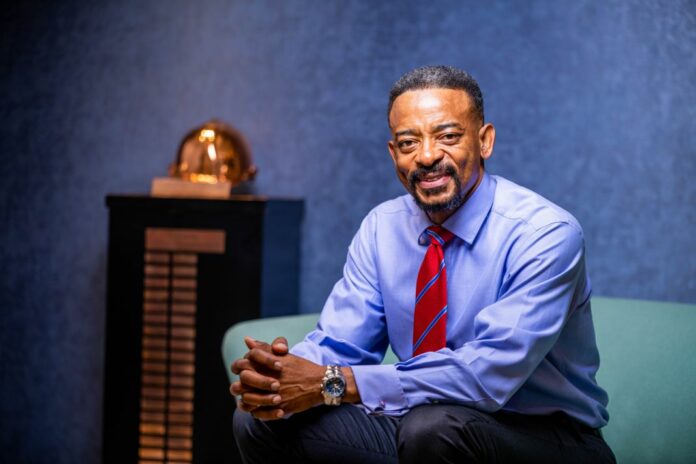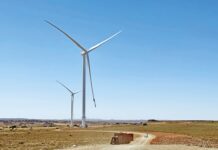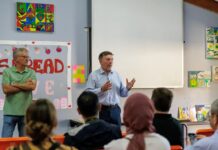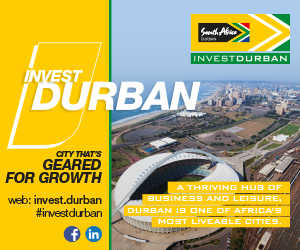How have your first months in office been?
I completed my “First100 days” at the end of November 2023 with, among other things, board approval of our strategic goals and a budget for the following year. I was pleased with the outcome. The transition was seamless given the extensive support that I received from my predecessor (he really helped me a lot in the process before I formally took over on 21 August 2023), the board, management team and family.
Overall, it has been a “no-regret” and I remain extremely excited about the role and the prospects for the industry and the country. From a governance perspective, we have a board of directors selected from the members and five Office Bearers consisting of the President and four Deputies who are selected from the board.
What are your goals as CEO?
Firstly, my vision considers where we are as a country and the role that I believe the mining industry can play. As a primary industry, I maintain that it can be a catalyst for South Africa’s economic development, treated with intentionality to instil change and progress. We have a country that needs significant infrastructure development, not only in current terms relating to Eskom and Transnet, but beyond that in terms of road infrastructure, human settlements, communication and the need to connect our cities through all modes of mobility. That is going to need materials which mining is best positioned to provide.
I have a vision of growth in mining output across several commodities, which can really transform South Africa in terms of the economy and social progress to a modern, culturally diverse and naturally beautiful country. At the same time, given the imperative for an energy transition, mining has an important role to enable the country to transition to a low-carbon future.
Firstly, in terms of the production of the minerals required for light and resilient materials and green technologies. More importantly, in terms of the “Just Energy Transition”, the economic stimulus from mining will provide economic opportunities that create the foundation for a transition to a better life. It’s an industry that I am very passionate about in terms of the positive social, economic and environmental impact that it can have on the lives of South Africans.
Going beyond extraction?
Absolutely, it is more than just about digging holes in the ground. It really is carrying the soul of people and transporting to a new future.
What will tell us that a Just Energy Transition is in fact occurring?
That expression, “Just Energy Transition”, requires elaboration. From an energy perspective, a Just Energy Transition first and foremost considers the fact that our current energy systems are largely based on coal. More than 75% of our electricity is coal-based and that remains a valuable energy and economic resource for South Africa. The whole value chain of electricity generation from coal mining to coal burning cannot be immediately abandoned. The potential negative impact of rapidly reducing coal inputs without consideration of the social and economic impact, would be unjust.
…it is more than just about digging holes in the ground. It really is carrying the soul of people and transporting to a new future.
How we adopt and adapt to new energy systems is important and a Just Transition would be occurring where we plan for continued (albeit declining rate of) use of coal but at the same time, we also plan to install renewables much more aggressively than we’re doing currently. In terms of generation capacity, we must be clear on what is viable and what is not. What are the possibilities of renewables? We should be ambitious and bold in terms of our renewable energy goals across a range of technologies, considering the constraints in terms of grid-scale storage, transmission limitations, sentiments towards nuclear energy and the pace of regulatory changes towards further democratisation of electricity management.
The second part on the Just Transition is to look at the social aspect, ie how the shift in energy technologies is going to cause a shift to new skills and capabilities as well as livelihoods. We should not abandon people in current employment and in locations where coal-based mining and energy activities are based. We need to apply our minds to the social setting where coal is and how that is going to change (and needs to change). What are the alternative livelihoods? What are the new economic opportunities that we can create and invest in that will sustain livelihoods?
Are you still engaged in the work of the Impact Catalyst?
I have been Chairman of the Impact Catalyst for the past three years. The entity was created from the vision and anticipation of livelihoods beyond mining. Mines are transitionary by nature. What alternative economic opportunities can be developed when the mineral resource has been exhausted? This consideration must start while the current mines are functioning and generating a source of revenue to invest in future economies. In addition, future mine sites must be developed in a manner that will have minimum impact on livelihoods compared to today.
Is there within the Minerals Council a desk dealing with the Just Energy Transition?
The Just Energy Transition is multi-faceted and it can never be located in one place, so each one of us, in different ways contributes to the conversation and activities related to the JET. One of our senior executives is a commissioner on the Presidential Climate Commission.
What is the potential for South Africa to help the world transition to a lower-carbon future?
The significance of South Africa’s mining industry to the domestic and global socio-economic setting remains unquestionable. It starts with the role it can play in terms of economic development and transition.
Some of the basic materials that we are already mining, such as iron ore and manganese for input into steel production, as well as limestone for cement and various other materials remain critical to ensuring that we are able to build that foundation for ongoing development and economic success. On top of that, there is a huge technology drive to explore and develop green minerals. South Africa also is endowed with minerals that are critical to a low-carbon future. Manganese is one of those. With the development of battery technology, it will grow in its importance. (Light) Steel is fundamental to infrastructure, and infrastructure that is adaptable to a low-carbon future and a future where we must adapt to higher temperatures.
South Africa is well-endowed with large vanadium resources and reserves, which are also important in battery technology. And of course, we have the platinum group metals (PGMs). In addition to applications for auto catalysts and jewellery, PGMs will play an important role in the development of hydrogen as an energy source. These are just some of the mineral commodities that South Africa is going to be contributing to this pool of green metals.
I assume you welcome Bushveld Energy working on vanadium redox flow batteries in East London?
That’s the kind of innovation we need.
Where else should we be looking for innovation?
There’s lots of work being done looking at hydrogen as a source of energy. Partnerships include PGM suppliers, Sasol, development capital providers such as the IDC and domestic and offshore hydrogen technology developers. I am looking forward to what will come out of that.
Do you see partnerships as key?
The future and future success is really going to be about collaborations; we will not reach it alone. I would like to use, as an example, Anglo Platinum and the hydrogen truck that they built. They produce PGMs and require more efficient ways of mining. They brought together partners to collaborate on a solution where it has access to technology that will create a cost, energy and carbon-efficient truck for its mining applications. It hasn’t abandoned its mining to focus on hydrogen.
We are going to see a lot more of that in terms of mining becoming a platform for developing innovative mining solutions without miners necessarily abandoning their core business activities.
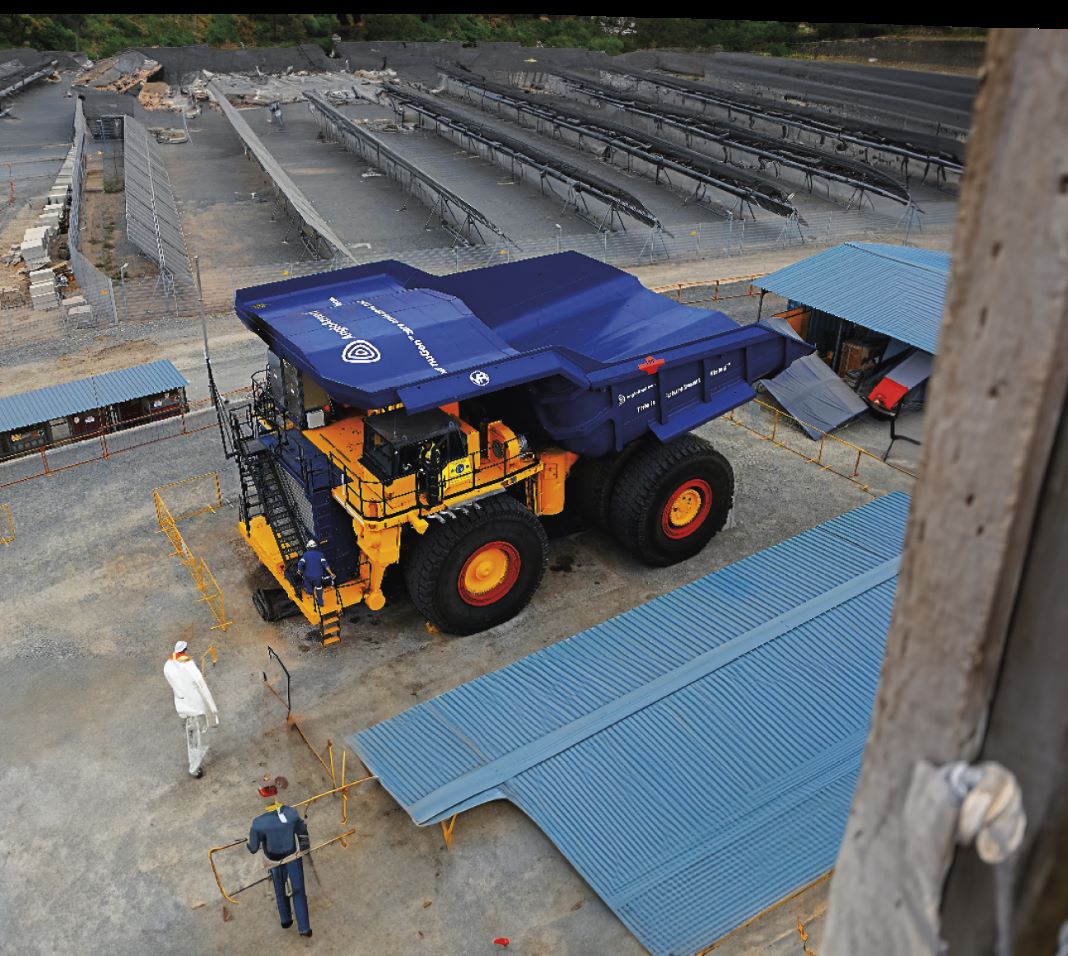
Is South Africa going to be in a position to take advantage of the potential green minerals boom?
That’s a fantastic question. It is really the current challenge now. We need to resolve some key issues in the value chain to ensure that we don’t lose out on the emerging critical minerals commodity boom, again.
One of the biggest challenges is around the legislative environment in enabling investment into exploration. You know about the constraints related to the cadastral system and the slow pace at which exploration and mining permits are being processed. That’s a huge trap of capital that is waiting to be invested for the development of new mines and realisation of enormous value.
From a mine-development capability and skills perspective, the industry is ready and able. Mining is a global business and South Africa has exported many mining skills to international mining destinations. We can attract and return these capabilities to stimulate and grow our industry.
Mining is a global business and South Africa has exported many mining skills to international mining destinations. We can attract and return these capabilities to stimulate and grow our industry.
What is the problem with the cadastral system and are you hopeful that it will be fixed?
Not only hopeful, but it is an imperative that we fix the situation and have an effective system installed. That is the only option.
In terms of the outstanding applications for prospecting and mining, the cadastral system should enable the whole process of application and approval to happen with ease on the part of the potential investor before they invest any money towards exploration drilling and developing a mine. It is an off-the-shelf system which has been installed by many other African countries that are developing their mineral potential. It is quick to install and is user-friendly as we have seen in Namibia, Botswana, Mozambique and Malawi, to name just some of our neighbours.
The Council for Geoscience is remapping South Africa and Petroleum Agency South Africa is searching for new sources of gas; would it help them too?
Exactly. Where there is a desire to find commodities for exploration, whether it is oil or gas or minerals, it is a system that can be applied to all of those commodities.
Are more mining companies going to start generating their own energy?
I take a step back, and see this is an immediate risk management strategy, but for the long term I don’t think it is something that will necessarily become a core part of their business unless the miner abandons mining and then reinvents themselves as a renewable or an energy company. While mining companies must contend with uncertainty of electricity supply from Eskom, they will invest in generating their own electricity for security of supply. Further, the cost of electricity has been increasing and so self-generation plays an additional role of reducing the cost of business. That investment is going to play an important role in maintaining the global cost competitiveness of our mines.
But they won’t be selling into the grid, will they?
They will invest for what they need and there’s a third component in terms of reducing their own carbon emissions because they will be taking less of Eskom’s electricity.
Carbon efficiency will add to their global competitiveness. With time, as electricity generation supply becomes stable, I foresee value-unlocking opportunities emerging where mines have invested in self-generation installations. A lot of these installations could be the basis of new energy companies, where the mining company pays a tariff to get access to that electricity and they get the investment off their balance sheet.
There seems to be quite a bit of foreign interest in the Northern Cape?
The foreign interest is widespread. Vedanta, from a base metals and zinc perspective, has been present in the country for a while and they’re really just consolidating around that asset in the Northern Cape. Given the long-term positive sentiment towards mineral commodities, including zinc, they continue to invest. In terms of other commodities, junior miners are very active, looking for new opportunities and the Northern Cape is one of those areas that still has huge opportunities for further exploration beyond what it is already known in iron ore and manganese.

The Minerals Council website references women in mining and several events related to that subject.
Women in Mining is not an event; it is who and the way we are and the way we work. Beyond the context of transformation in South Africa, in mining, our members have invested significant amounts of change effort to increase the participation of women in the workplace across all levels of mining, currently standing at 15% of the mining workforce.
We are led from the top by Ms Nolitha Fakude as the President of the Minerals Council South Africa, which represents members for 90% of the mineral production of South Africa and close to 5% of the formal sector workforce. Large corporate agents of transformation in the mining sector, such as Exxaro Resources and Kumba Iron Ore, are led by women CEOs, Dr Nombasa Tsengwa and Ms Mpumi Zikalala, respectively. So, at the leadership level we are making good progress. The representation and participation goes deeper into various levels of our member organisations. What’s also been pleasing is that as technology improves, the emphasis has been less on (literally) manpower, which has allowed more women to participate at the “mine face” where production takes place.
As an industry we are focused on diversifying the workplace, harnessing the full potential of human capability to maximise value creation and ensuring that everyone who participates in mining thrives economically and socially.
Please tell us about the Mandela Mining Precinct.
The Mandela Mining Precinct is one of our pride and joys. It is a private-public partnership between ourselves and the Department of Science and Innovation through the CSIR. It focusses on how we continue to modernise mining in all respects.
It is innovation, not only from a technical perspective but also in terms of how people interact with technology and how technology is used to enhance the capability of people. It is also looking into the future in terms of what are the future needs of society which mining can fulfil. The research done today in order to prepare for the future. And it is led by a woman, Ms Julie Courtnage, I should add.
Any final thoughts on the mining sector today?
In order to get to the position where the mining industry can play the role that we want to play, it is important that we fix the challenges that the mining industry is faced with. We often say that the challenges of Transnet and Eskom present an existential crisis, not only to the mining industry but to the economy of South Africa. The mining industry is playing a role in ensuring that we address these critical areas to remain globally competitive. We are working very closely with government and the rest of South Africa’s business in ensuring that Eskom performs effectively and efficiently in terms of delivery of electricity.
We’re very pleased with the reforms that have been announced to date and we look forward to implementation sooner rather than later. Equally with Transnet, stabilising performance is going to contribute significantly to arresting the decline in mining output that we’ve seen recently and that will provide for confidence and certainty in terms of reinvesting in mining and planning for growth.
In order to get to the position where the mining industry can play the role that we want to play, it is important that we fix the challenges that the mining industry is faced with.
The reforms do need to be executed with speed and at scale because of the impact that they are going to have on confidence in mining and other sector investment and consequent employment creation. It will generate revenue for the fiscus and the combination of these is a stimulus into the economy which will then begin to see the economy perform well above the current levels of 0.5% of GDP growth, to the national ambition above 6%. Lastly, to inspire confidence and a sense of well-being and safety in the rest of society, we are also playing a big role in eliminating crime and corruption, because that is affecting the whole economy and many aspects of our lives.
The expected outcome is greater security for people, households and business assets and freedom of movement which will provide for thriving livelihoods and economy. Therefore, these three areas remain a critical priority for us to continue to focus on and deliver during this year, which I call “2024 Forward and Upward”.
Biography
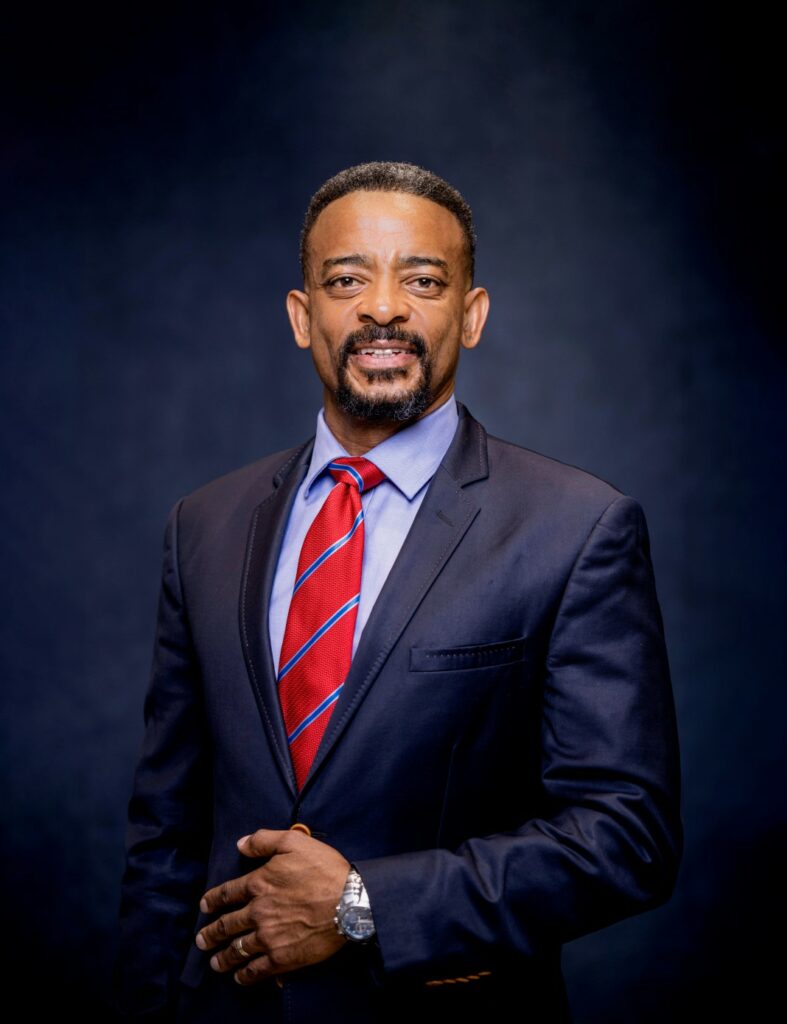
Mzila Mthenjane is the CEO of the Minerals Council South Africa, the advocacy and impact group whose members represent 90% of South Africa’s mineral output and employ close to 480 000 people. He was previously the Executive Head for Stakeholder Affairs at Exxaro Resources Limited.
He has more than 30 years’ combined experience in the resources business (gold, platinum and coal) and investment banking (Corporate and Project Finance). He has held various board positions as non-executive director in various entities including Pamodzi Gold Limited, Fraser Alexander, Impact Catalyst, Merafe Resources and the Student Support Programme.
He is the current Chairman of the Board of the Impact Catalyst and is the former Chairman of the Wits University Mining Engineers Association (WUMEA) and the former President of the South African Institute of Mining and Metallurgy (SAIMM).
He holds a BSc degree in Mining Engineering from the University of Witwatersrand (Wits) and has completed various leadership development training programmes. 



